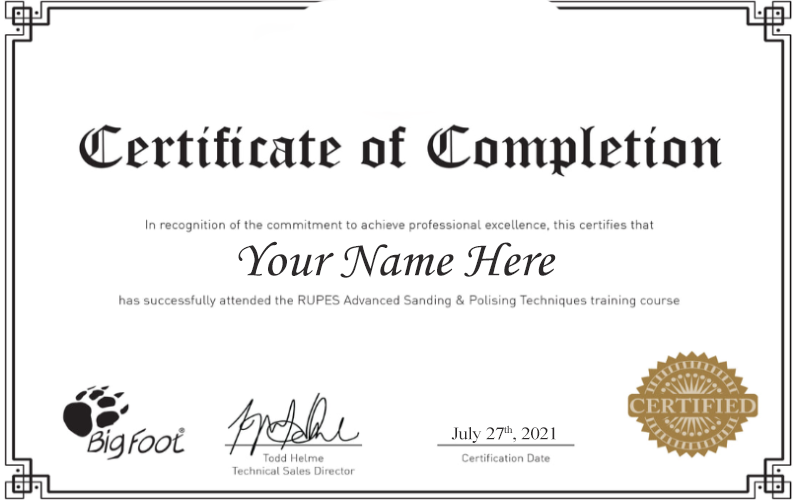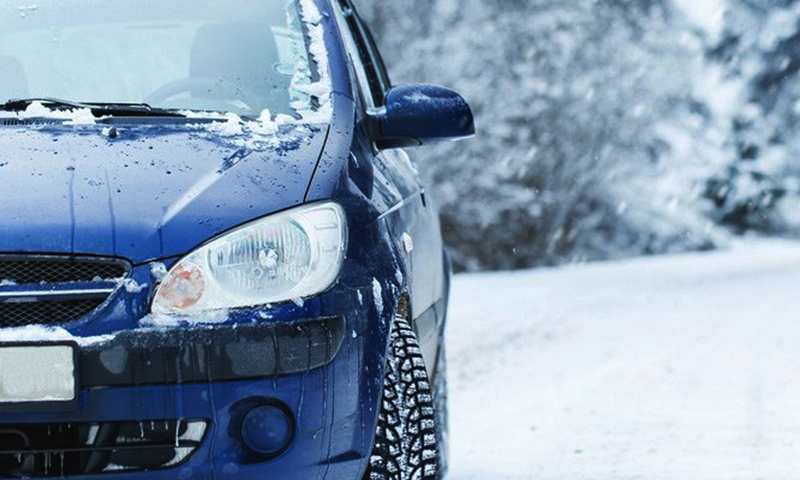Many of us love the time we spend on the open road. Driving out in the car means family days out, day trips to the nearest national park, summertime road trips with friends, and driving to visit family and friends during the holidays. Even when you factor in the daily commute and the school run, it’s still not a time we associate with any kind of negative emotion…or do we?
For a number of people, driving brings out a different kind of reactive behavior, and it’s certainly one that we should view as negative. In today’s blog, we’re exploring the interesting world of road rage:
- What is road rage?
- What are the symptoms of road rage?
- What causes road rage?
- What are the negative effects of road rage?
- What are some ways to deal with road rage?
What is Road Rage?
A good place to start would be with a clear definition of this key term. What exactly is road rage? Below is the definition as shared by the Department of Motor Vehicles (DMV):
Road Rage – “aggressive or violent behavior stemming from a driver’s uncontrolled anger at the actions of another motorist.”
The NHTSA definition is similar – when a driver “commits moving traffic offenses so as to endanger other persons or property; an assault with a motor vehicle or other dangerous weapon by the operator or passenger of one motor vehicle on the operator or passengers of another motor vehicle.”
So, it’s aggressive driving, right? Actually no. Road rage is something of a more extreme matter than just driving aggressively, assertively or defensively. In those three driving types, you are not necessarily blinded by angry emotion, nor are you necessarily breaking any of the established rules, laws and even etiquette of the road. That’s what sets road rage apart from them. You might not be in the best mood when driving aggressively or even defensively, but the difference is that you are not in a state of unbridled anger and rage. Even more importantly, you are not committing an arrestable offense, though some aggressive driving might fall under ‘traffic infraction’ depending on its exact nature.
The term has its official definition from the DMV and the NHTSA, but originates in fact from the local news station in Los Angeles, KTLA. There had been a series of shootings on the freeways in the city, which prompted the station to refer to the phenomenon as “road rage.”
What are the Symptoms of Road Rage?
Next, let’s think about what are the signs that people are currently partaking of their “road rage” tendencies. It’s important that all of us reading this reflect on these points, because no matter how pacific you think you are when you’re driving on the road, you might be guilty of some of the behaviors or at least mild forms of behaviors that can easily turn into road rage. Ask yourself the following questions to determine if you may have road range tendencies:
1. Do you honk your horn? Do you honk it often? Could you justify every time that you’ve ever honked the horn according to proper traffic rules?
A lot of people out there are misusing their horn, no matter what they think of how they’re using it typically. The horn has one main purpose, and that is to alert other road users to your presence at times when there could be a problem that impairs the other party’s ability to see you on the road. For instance, some people slow down and beep the horn when approaching tight bends on narrow roads. It alerts other cars that someone is coming around that corner. Many such bends in the road have since had mirrors installed to help with this problem.
Another example of horn use might be to warn a driver who failed to check their blind spot and starts to merge in a way that makes collision with your car possible. In any event, the horn is there as a functional item, not as a valve through which you can unleash your anger or other negative emotions.
2. Do you regularly exceed the speed limit? Do you accelerate towards traffic lights because you want to “beat them”?
This is another classic symptom of road rage tendencies. When you are exceeding the speed limit, it could well be because you are feeling pressured by whatever time limit or deadline is upon you. Alternatively, you might just feel impatient of the limit, feeling it to be too low to meet your needs and that in your case it doesn’t matter if you go over them.
With the traffic lights and your ongoing competition in which you fight to “beat the traffic lights,” you perhaps on some level know that you don’t have the patience to just sit and wait if the lights turn. You want to avoid that waiting scenario as much as possible, so you’ll even take risks and accelerate in order to get through the lights.
3. Do you follow cars ahead too closely? Do you ever flash your headlights at them to signal that they are going too slowly or should ‘get out of the way’?
As with the problem of exceeding the speed limits and racing to beat traffic lights, following other cars too closely (aka tailgating) is another behavior that exhibits superlative impatience, perhaps even feelings of your own superiority on the road. You follow closely as though you are getting ready to pass them, or perhaps because you want to signal them in some way so you get closer to allow them a better view of your impatient face or other signals (e.g., headlight flashing).
Drivers are taught from the very beginning that tailgating is a dangerous activity, and in doing this you are putting yourself, your passengers and other drivers on the road at risk. What’s worse, you’re doing it because of your negative emotional state – this is the very essence of road rage. It’s the foundation that turns into the usually illegal behaviors that constitute those “moving traffic offenses…to endanger other persons or property.”
What Causes Road Rage?
Obviously, there is an important psychological factor behind road rage behavior. The person who is engulfed by road rage obviously has issues surrounding:
- Anger management
- Patience
- Unnecessary risk-taking behavior
- Irrational responses to others’ behavior
- Taking the actions of others as a personal affront
We don’t delve too deeply into all of those reasons because these are things that are best explored by qualified medical professionals. There are other behaviors on the road, however, that are the more practical and common triggers for road rage incidents. We will first go through those:
1. Distracted Driving
One thing that is sure to send others into a potential tailspin of road rage is witnessing others being distracted on the road. The classic example of this could be waiting behind someone at an intersection, the light turning from red to green, but the car in front not moving because the driver is absolutely absorbed in whatever they are doing on their smartphone. This is a big trigger in those who are for whatever underlying reason more susceptible to road rage.
2. Poor Management of High Beams
When one driver rides around at night and never adjusts their high beams when they see oncoming traffic, this is another common trigger of road rage. What can be even worse is that the drivers who prompt the rage feelings never see the consequences because they’re off driving in the opposite direction, and so it might be someone else who receives the “wrath” of the road rage. Perhaps these drivers just need Matrix high beams.
3. Improper Turn Signal Usage
Drivers who merge lanes, make turns and perform similar maneuvers without using their turn signals are another target of road rage ire. Oddly, however, overusing the turn signals might also be a trigger, as people become frustrated and confused that the car in front of them is signaling a turn but then not taking it.
4. Missing the Blind Spot
The shock and sudden wave of fear that can come over you when you encounter someone who cuts you off on the road is another big source of road rage. This most often happens when drivers don’t check their blind spot when merging or making another maneuver. They instead may just rely on the mirror, or think they’re relying on their blind spot monitoring ADAS system but are actually ignoring its warnings.
That sudden wave of negative emotion fills up one party, and can emerge in the form of road rage. Looking at the above four causes of road rage, all of us should stop and reflect somewhat on our own behavior. Other things could include drivers ignoring traffic signs, failing to yield, failing to stop at a stop sign, or perhaps even others engaging in road rage. That last one is the most interesting, where one incidence of road rage sparks a kind of chain reaction that brings others into its negative energy field.
What are the Negative Effects of Road Rage?
There are a number of startling statistics which highlight at least some of the negative impacts that road rage has on America’s roads. These numbers all come from the NHTSA and Auto Vantage.
A shocking 66 percent of traffic fatalities are caused by aggressive driving
This is perhaps among the more sobering of all the statistics. A clear majority of on-road deaths are caused by the aggressive driving and bad behaviors that can result from road rage. As we made clear earlier, the NHTSA points out that there is a distinction between aggressive driving and road rage. What we can’t deny, however, is that road rage is an evolution of aggressive driving; it’s aggressive driving taken to the next level. Therefore, while all of these fatalities are not exactly down to road rage, many of them likely are.
Males under 19 years of age are the most likely candidates to show road rage.
This might not be so surprising to many people. Young, hot-headed males are at the heart of the road rage epidemic that has gripped America and the world. This demographic has enough problems with getting cheap insurance and being more likely to be involved in accidents anyway without involving the potential impacts of road rage incidents.
Half of drivers who receive horn honking, aggressive hand gestures and similar actions will respond with similar behavior themselves.
This proves that one of the negative consequences of road rage is more road rage. If you start in an incident by giving the driver in front of you the finger so they see it in their mirror. There is a 50/50 chance that they will respond in kind. This kind of tit for tat only leads down a negative path to further problems.
Up to 2 percent of drivers admit they have tried to run an aggressor off the road.
This number might sound insignificantly low, but would you really want to take even a 2 percent chance? Your negative road rage behaviors might prompt 2 out of every 100 drivers to attempt something so dangerous, even lethal, as running you off the road.
Finally, over a 7-year period, there were 218 murders and more than 12,000 injuries attributed to road rage.
This highlights yet another disturbing impact of road rage on society and those around us. Put simply, people get hurt; they even get killed. Road rage isn’t about letting off steam or venting your spleen. It’s apparently a deadly and dangerous behavior that doesn’t just endanger people’s safety, but even threatens their very lives.
Road rage doesn’t just make the road more dangerous for you and your passengers, not just those of whoever it is that you have designated the recipient of your wrath, but also the countless innocent bystanders and drivers around you who might get caught in the maelstrom of your inappropriate and irrational behavior.
What are Some Ways to Deal with Road Rage?
It is quite clear from statistics and from common sense that road rage is a danger to ourselves and to other people on the road. If you have read and reflected on what we’ve said so far, and have found your own emotional performance on the road somewhat lacking, then here are some effective strategies you could use to beat road rage before it takes too much of a toll on you or others around you.
1. Forget About Being Right
This is a very important state of mind to develop when dealing with road rage. A lot of the worst road rage incidents start as small reciprocal actions that snowball into something much bigger and more dangerous. The fuel that perpetuates this chain reaction is both sides refusing to back down and back off, and they don’t back down because they are fighting to “be right” and to come away as the winner of the exchange.
On the road, your petty wins and losses in squabbles and conflicts with other drivers do not matter one bit. The only thing that matters on the public road is that all users and surrounding pedestrians and property remain safe. If you can be the one to take a breath, step away, stop responding and stop adding fuel to the mutual rage, then you might just be the one who stops it turning from an outburst into a full-blown tragedy.
An exchange of middle fingers turns into horn honking and tailgating; the two cars pull up next to each other and the drivers exchange words through open windows; all attention on the road ahead has been abandoned; one driver pulls ahead, the other chases and tries to run them off the road; the car ahead loses control and hits a tree with the driver suffering a severe head injury; the chasing car driver is sentenced to jail. No one is right here, and nobody wins.
2. Shed Your Sense of Entitlement
You being in a car and being on the road doesn’t make you more entitled to be on that road than anyone else. Your car being bigger, more expensive, fancier or otherwise of a “higher order” is also not a reason for you to feel more entitled to this public space than anyone else. This sense of entitlement is often at the root of many incidents of road rage. Therefore, a good way to preemptively deal with road rage is to endeavor to shed any sense of entitlement you ever thought you may have had to the road. Everyone with a driving license and vehicle has equal right to road access, everybody makes mistakes on the road (including you), and therefore there should be no logical grounds for you to flip out or lose your temper with others, regardless of what actually happens out there.
Shed the entitlement and you’ll find that any sense of rage or anger finds it much harder to take hold in your mind.
3. Play Some Calming Music and Breathe
When you feel any tension rising or general stress from driving on the road, it’s best to put on some music that you enjoy and practice some nice deep breathing. The combination of positive feelings from the music and the calming effect of breathing will help those more negative stressors and bad feelings wash over you and disappear. These things are designed to get your mind off of the behaviors that are triggering negative emotions and onto more positive things. The distraction can just be what stops you from going “over the edge.”
4. Try Some Mantras, “I’m Safe, It’s Okay”
Some doctors recommend that the best way to respond to those moments that we described above when you feel the rush of emotion after someone cuts you off on the road is to repeat positive affirmations to yourself such as “I’m safe, it’s okay, nothing bad happened.” In that moment, the surge of emotion that can easily turn into rage is caused by adrenaline that is released. The adrenaline is supposed to help us deal with bad situations, but in this instance, what has happened is that something bad nearly happened, but then didn’t. We are left with the excess adrenaline to deal with, and that can turn into either rage, or more positive feelings.
By repeating the positive mantras and affirmations, we can keep our body on the positive side of that reaction, and prevent it from descending into a blind rage.
5. Understand What You Can Control and What You Can’t
As we touched on further above, other people on the road are going to make mistakes. No matter how much you angrily reflect on what people should or shouldn’t be doing, there are many things that happen on the road that are beyond your control. If you can continually tell yourself this, and keep it in mind when you inevitably encounter other drivers who behave badly on the road, you will at least stand a good chance of sparing yourself the pointless frustration; the “coulda, woulda, shoulda” thought processes that also can potentially fuel road rage.
Conclusion: Road Rage is a Reality, But It Doesn’t Have to Be Yours
As long as you are mindful of your own driving, and can exist within the realities of the road, then you can at least prevent yourself from succumbing to road rage. The reality is that road rage does exist, and you have no way to control whether or not it manifests itself in other drivers. What you can do, however, is ensure that it is not allowed to manifest within yourself. Remind yourself of the important realities:
- Some people exhibit road rage
- All drivers make mistakes on the road
- I have no way to control the driving behavior of others
- I am only responsible for my own driving
- Safety is paramount for myself, my passengers, and other road users
When you understand and internalize these realities, you will be in a much better place and more able to resist the urge to sink into a rage which will only serve to bring more misery and harm.



